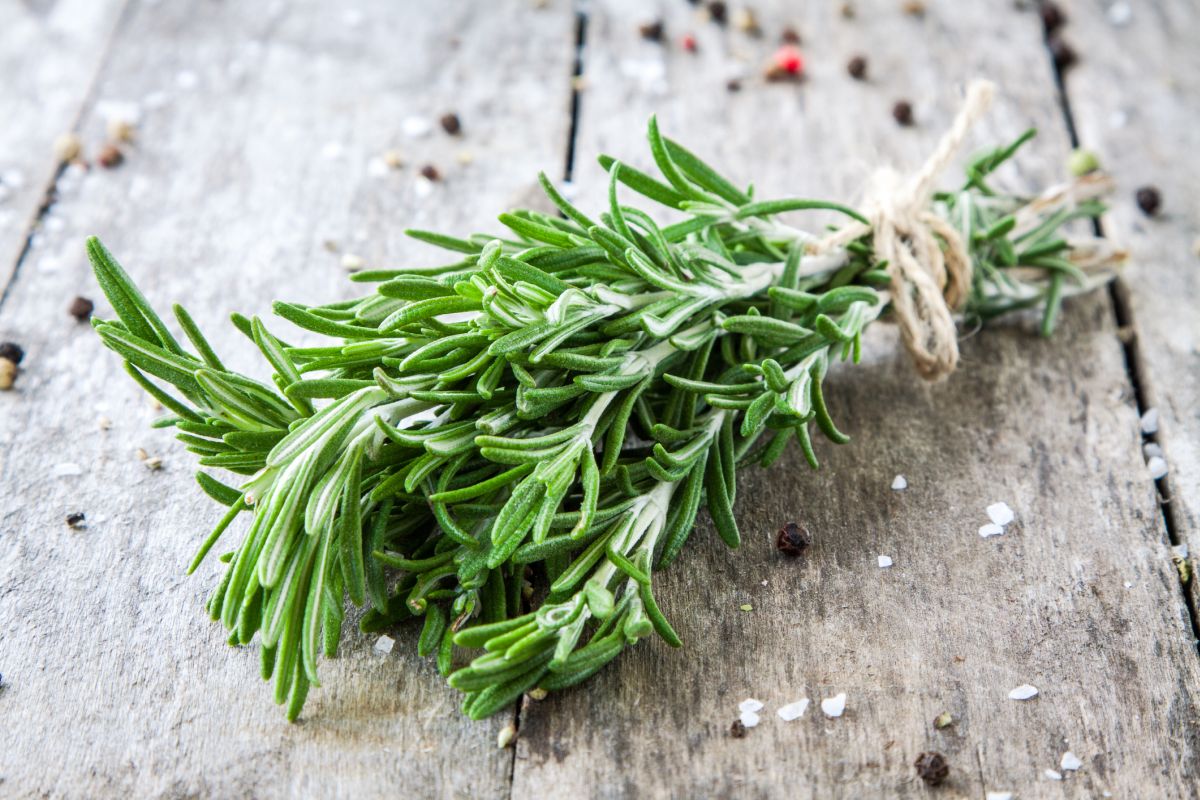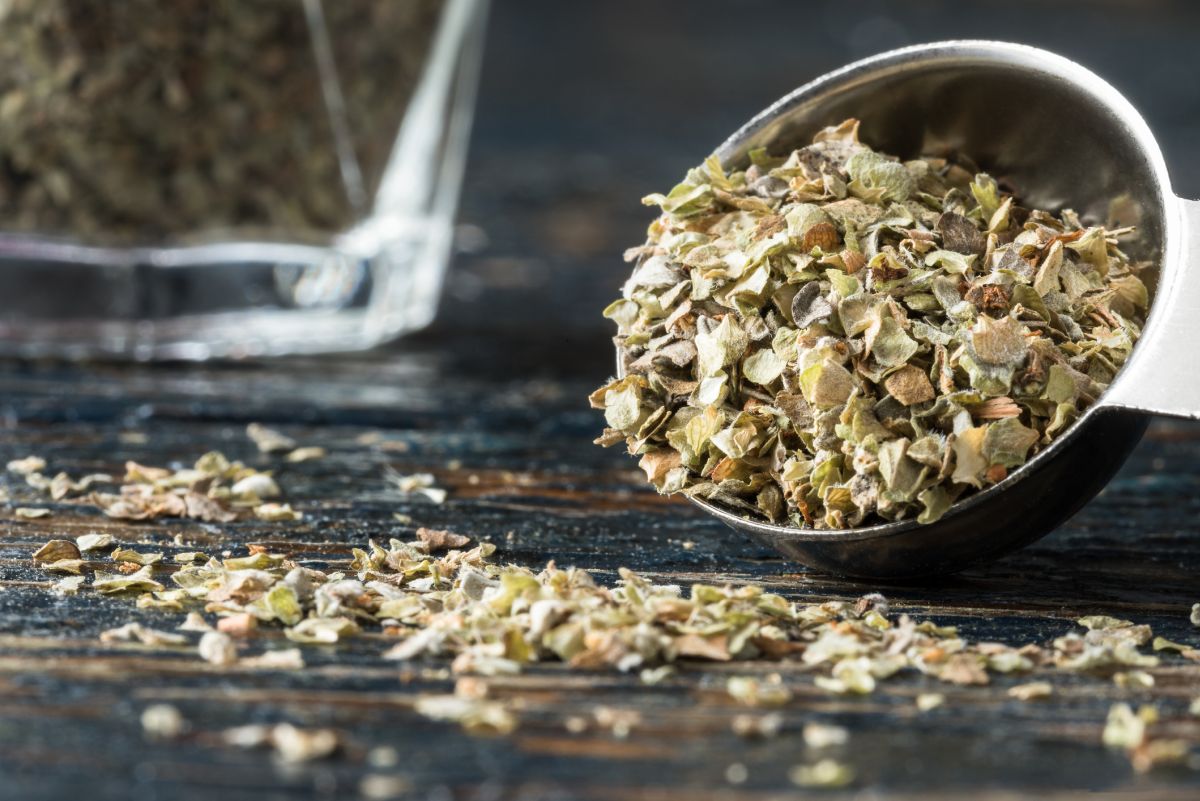You may need a thyme substitute when cooking or baking with a recipe that calls for this common spice. Of course, if you’re near a store that sells herbs and you can make it there and back without compromising your cooking, the best option is always going to be to go to the store and buy the spice your recipe calls for.
But what if it calls for fresh thyme, and your local grocer is out? If you don’t have any growing in your backyard or the dried variety in your spice cabinet, you might need to find a thyme substitute.
Or perhaps you’re elbow-deep into a bread recipe or dinner date prep and don’t have time to dash to the store for that spice you thought you had until the cooking or baking began.
Not to worry. Whether you’re swapping dry spice for fresh or substituting an entirely different herb in its place, we can help you figure out the best approach to take and maybe save your date or dinner side dish in the process.
What is Thyme?
Thyme is a woody herb common in French and Mediterranean dishes. However, it is essential to note that these two spice varieties have different flavor profiles.
The French version has a much softer flavor than the Mediterranean one. Swapping one type of thyme for another is the simplest option. So, if you have thyme on hand but it’s just the wrong variety, you can adjust it up or down to suit the flavor profile of your desired dish.
Thyme is native to the Mediterranean region and began interacting with humans as a medicinal herb. It is a shrub known for its anti-inflammatory and antioxidant properties.
The herb grows wild in these regions, which is a significant reason the Mediterranean diet is so healthy, and becoming more popular in the Western world. Its name stems from the Greek “Thymos,” indicating courage or strength.
There are 36 subspecialties of the plant, but you’re unlikely to find them all in your local grocery store. One or two cultivars are the most common and the ones you’re likeliest to encounter and bring home from your next store trip.
Thyme is used in many European dishes, where the dried version is an essential element of Herbs de Provence in France. Fresh thyme is used in this same region to create bouquet garni, which combines sprigs of thyme with rosemary, parsley, and bay leaf to simmer in soups.
Thyme’s ability to withstand heat and long cook times makes it an ideal choice for soups and stews. It is also a component of the Middle Eastern seasonings za’atar and dukkha, Jamaican jerk seasoning, and the Creole spice used for the cooking technique of blackening that New Orleans is famous for.
What Does Thyme Taste Like?
Thyme has a slightly lemony taste, reminiscent of earth and mint. It contributes complexity to a recipe rather than a specific flavor.
Rather than imparting any particular flavor, this herb is known for creating complexity in recipes and working with the other flavors in your foods. This is excellent news if you don’t have any on hand because it means you can substitute other options without sacrificing the quality of your dish.
But you don’t want to skip including this herb if it’s called for because it could leave you with bland, flavorless food.
Different herb variants can create different flavors mainly based on the herbs and other seasonings they are mixed with, or the style of thyme you have chosen. Consider options like orange thyme, Za’atar thyme, or caraway thyme.
Every variety of this spice works with a wide variety of dishes because of its complex flavors. Use it with meats and vegetables or vegan meals where you opt out of meat altogether. Create main or side dishes, snacks, and even desserts.
There are hundreds of variations of this herb, but common thyme, French thyme, and lemon thyme are most often used in cooking. The French version is much sweeter than the typical variety, while lemon thyme has more of a citrus character than other versions.
Each has its own character and works best with certain types of foods and recipes and should be used accordingly, but they can be substituted for one another when needed. You may simply need to adjust the amount you’re using.
Common Uses for Thyme
The most common uses for thyme include savory dishes, cocktails, fish, and side dishes for culinary purposes, but that’s hardly the only use for this multipurpose herb. It is perhaps the most versatile herb on the market, making it an excellent option for whatever variety of cuisine you are making at the moment.
Traditionally, thyme is used for stuffings and marinades, soups, stews, and chowders. The herb is often used in tender meats like lamb and veal, with eggs, appetizers, and even desserts. Spaghetti and pizza sauces also rely on thyme for their flavor.
You may also encounter thyme in chili recipes, and it can be used to make tea. It is one of the few fresh herbs that can withstand high temperatures for extended periods.
The leaves are likely to fall off during the process and are entirely safe to eat, but you should try to locate and remove any woody stems before serving foods containing thyme, as they could become a choking hazard.
Fresh thyme Uses
- Boil with water, honey, and lemon to create a cough syrup
- Help hair regrow in or out of the shower by mixing it with lavender, tea, or rosemary
- Make sauces for seafood or vegetables
- Blend it into butter to give it a fresh flavor
- Steep it n water to create a tea
- Mix it into your pasta or sprinkle it over the top
Dried Thyme Uses
- Use it in stuffing for savory meat dishes
- Create a dry rub for chicken and other meats
- Add it to your next bread dough to give it some extra oomph
- Stir into your tomato sauce before tossing your pasta
Why You May Need a Thyme Alternative
You may need a thyme alternative because you either don’t have any of the varietals your recipe calls for on hand. As with any herb, the best alternative, if you don’t have any fresh thyme on hand, is to use dried, and vice versa.
The proper conversion for nearly all herbs is 1 teaspoon of dried spice for 1 tablespoon of fresh.
But what if neither one is currently in your kitchen? Then what you choose to use as a substitute depends on what you’re making.
Is it sweet or savory? A drink, a dessert, or a meaty entrée? Are you replacing fresh, dried, powdered, or ground thyme?
All these things factor into which spice to use as a replacement when you’re out of thyme and searching for a suitable alternative.
10 Best Thyme Substitute Options
Thyme is a member of the mint family, making its relatives some of the best substitutes, though not the only ones. Consider the taste and texture of the meal you’re making and the flavor profile of your meal when making your selection.
And definitely don’t discount using spices that contain thyme as part of a blend if you don’t have the singular spice on hand.
Fresh Herb Thyme Substitutes
1. Oregano
Oregano makes an excellent substitute since both herbs are from the mint family.
2. Parsley
Unlike other options, parsley is less earthy than thyme, making it ideally suited for cold foods like dips and salads
3. Rosemary
Rosemary is a stronger herb than thyme, so you’ll want to reduce the amount you’re using. If you’re steeping this in a stew, leave the woody stem attached.
4. Basil
Like Oregano, basil is in the same family as thyme, allowing them to be easily swapped. But it also has a much stronger flavor. Cut the amount called for in half if you substitute basil for thyme.
5. Sage
Sage is a pretty strong herb on its own, though it is often used in partnership with thyme. It has a more piney flavor than thyme, so use it sparingly if you are replacing your thyme with sage.
Dried Herb Options for a Thyme Substitute
6. Marjoram
Marjoram is similar to oregano, woody and minty, but a bit sweeter, and lighter. You might want to use a slightly higher concentration if substituting this herb for thyme and adjust your other flavors accordingly
7. Italian Seasoning
Italian seasoning is a great alternative if you’re out of thyme because it is one of the herbs contained in this blend. Several of its brethren herbs are as well – oregano, basil, marjoram, and rosemary.
8. Herbs de Provence
Like Italian seasoning, Herbs de Provence is a blend. But thyme is the primary ingredient in this blend, making it an excellent replacement option
9. Bay Leaf
Bay leaf has a mild mint flavor, similar to thyme. It works especially well in recipes for meat and stew.
10. Za’atar
Za’atar is another blend that contains thyme and other herbs in the same family. However, it also contains toasted sesame seeds and salt, so you may want to reduce the amount of salt in your recipe if you substitute za’atar in a recipe that calls for thyme
How to Substitute Dried Thyme for Fresh Thyme
To substitute dried thyme for fresh thyme, use 1/3 of the amount because dried herbs are much stronger than their fresh counterparts. If a recipe calls for a tablespoon of fresh thyme, you need only a teaspoon of dried thyme.
However, this can be a bit more difficult to decipher when it comes to thyme. Many recipes call for a sprig of thyme rather than a spoon measurement.
How big a sprig is will be up to you to determine. But, traditionally, the leaves from one sprig of thyme will fill about 1/3 of a teaspoon.
Use ¼ of a teaspoon of dried thyme as a substitute for 1 sprig of fresh thyme. You’ll need even less if you’re using ground or powdered thyme.
How to Substitute Fresh Thyme for Dried Thyme
To substitute fresh thyme for dried, use three teaspoons (or one tablespoon) of fresh thyme for each teaspoon of dried your recipe calls for. While it’s less common, there may be times when you need to swap out fresh thyme for dried.
If you’ve used up what’s in the spice cabinet or had it long enough to lose its flavor, but you also grow it in your backyard, you might find yourself swapping out fresh for dried.
The ratio is four to one if you’re using fresh thyme instead of ground or powdered. You’ll need four teaspoons of fresh thyme for each teaspoon of powdered you’re replacing.



Leave a Reply